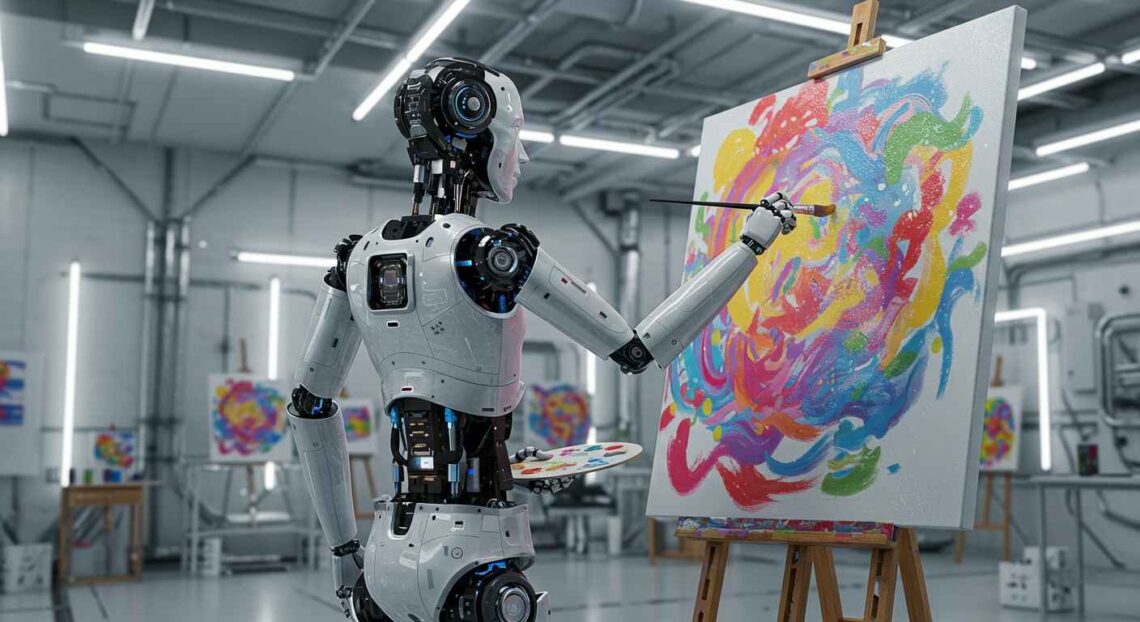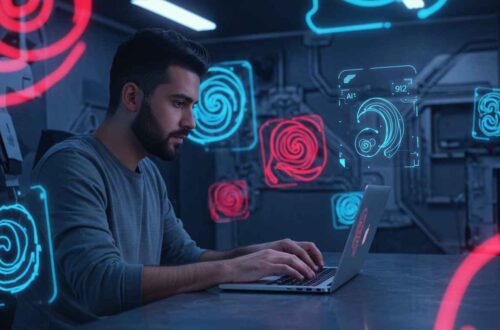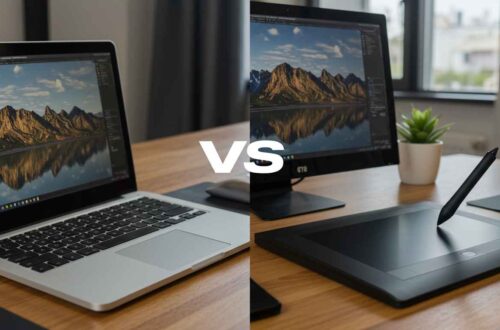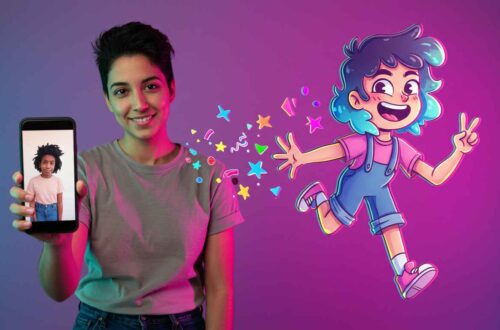Artificial Intelligence has changed the way we create and interact with visuals. A few years ago, designing a picture or illustration required drawing skills or complex software. But today, thanks to AI image generation, anyone can create professional-quality artwork — from simple text prompts.
If you’ve ever wondered how AI can turn words into images, or what tools are behind it, this guide will explain everything in the simplest way possible.
Let’s explore what AI image generation is, how it works, popular tools, and how you can use it effectively.
Understanding AI Image Generation
AI image generation is the process of using artificial intelligence to create images automatically from text descriptions or input images.
For example, you can type:
“A futuristic city floating in the clouds at sunset,”
and the AI will generate a picture that matches this description — within seconds.
This technology uses machine learning models trained on millions of images and their descriptions. It learns the connection between words (like “cat” or “mountain”) and visuals (what cats and mountains look like).
So when you give it a prompt, it uses that knowledge to imagine and generate a brand-new image that never existed before.
How AI Image Generation Works (In Simple Terms)
You don’t need to be a data scientist to understand the basics. Here’s how it works step by step:
1. Training on Huge Image Datasets
AI models are trained using billions of labeled images — for example, a photo of a dog labeled “dog.”
Over time, the AI learns what shapes, colors, and patterns make something look like a dog, car, or sunset.
2. Learning Relationships Between Text and Visuals
The system connects words (like “red,” “glass,” or “castle”) with visual patterns — so it knows what a “red glass castle” might look like.
3. Text-to-Image Conversion
When you enter a prompt, the AI converts your text into a “visual concept” and begins to create the image pixel by pixel.
4. Diffusion or Generative Models
Modern AI tools like DALL·E, Midjourney, and Stable Diffusion use a special technique called “diffusion.”
In this method, the AI starts with a random noise (like static on a TV) and slowly transforms it into a meaningful picture that matches your description.
Examples of AI Image Prompts
Here are a few fun examples to help you understand how it works:
| Prompt | AI-Generated Output |
|---|---|
| “A cat wearing sunglasses on a beach” | A realistic or cartoon-style image of a cat relaxing on the sand |
| “Ancient castle on Mars at sunset” | A creative sci-fi scene of a glowing castle on a red planet |
| “Logo for a coffee brand with a minimalist design” | A sleek, brand-ready logo concept |
| “Portrait of a person in Van Gogh painting style” | Artistic portrait in impressionist brush strokes |
You can change the style, mood, and composition simply by rewriting your prompt.
Popular AI Image Generation Tools
Let’s take a look at some of the most used and powerful AI image generators in 2025:
1. DALL·E 3 (by OpenAI)
One of the most advanced and user-friendly AI image tools.
It generates accurate and detailed visuals based on your text input.
It’s integrated with ChatGPT — so you can just describe your idea conversationally.
Best for: Realistic or creative illustrations, concept design, product mockups.
2. Midjourney
Midjourney runs through Discord and is known for its artistic, cinematic-quality results.
It creates beautiful, detailed, and stylized images perfect for wallpapers, posters, or creative projects.
Best for: Artists, designers, and creators who want aesthetic visuals.
3. Stable Diffusion
An open-source AI model that gives users full control over how images are generated.
You can install it locally, use it online, or integrate it with apps.
It supports customization through models and styles.
Best for: Developers, experimenters, or anyone who wants creative freedom.
4. Leonardo AI
A newer and fast-growing tool offering high-quality visuals, UI design elements, and concept art generation.
It’s great for beginners and professionals alike, offering easy control and templates.
Best for: Game design, digital art, and product prototypes.
5. Canva Magic Media
If you’re already using Canva, its built-in AI image generator, Magic Media, lets you create and edit visuals within the same dashboard.
Best for: Marketers, social media creators, and business owners.
What Can You Create with AI Image Generators?
AI-generated images aren’t limited to art — you can use them for many real-world applications:
- Social Media Graphics:
Create unique Instagram posts, YouTube thumbnails, and Pinterest visuals instantly. - Blog & Website Images:
Instead of using stock photos, generate custom visuals that match your content perfectly. - Product Mockups:
Design product ideas and packaging without needing a photoshoot. - Logo & Branding Concepts:
Experiment with creative logo ideas or brand themes. - Book Covers & Illustrations:
Writers can generate illustrations for stories, book covers, or marketing materials. - Training Data for Other AI Models:
Developers use synthetic (AI-made) images to train new models safely.
AI Image Generation: Pros and Cons
Let’s look at both sides:
✅ Advantages
- Fast: Create visuals in seconds.
- Affordable: No need to hire designers for every task.
- Creative: You can visualize abstract ideas easily.
- Customizable: Control colors, style, and details.
- Accessible: No design skills needed.
❌ Limitations
- Sometimes results may be inaccurate or distorted.
- Human touch and emotion can still be missing.
- Copyright and usage rights must be handled carefully.
- Over-reliance on AI can reduce originality if used carelessly.
Tips for Writing Better AI Prompts
The quality of your output depends heavily on the input — your prompt.
Here are a few simple tips to get better results:
- Be Specific:
Instead of saying “a car,” say “a red sports car driving on a mountain road at sunrise.” - Add Style:
Mention if you want “realistic,” “cartoon,” “watercolor,” or “cyberpunk” styles. - Include Details:
Add lighting, mood, or background — like “soft lighting,” “stormy sky,” etc. - Experiment with Angles:
Try prompts like “top-down view,” “portrait,” or “wide shot.” - Refine Iteratively:
Generate several versions, then tweak your prompt to improve accuracy.
Ethical Use of AI Images
AI image tools are powerful, but they should be used responsibly.
Here’s how to stay safe and ethical:
- Don’t generate or share inappropriate or copyrighted content.
- Always credit the AI tool used if required.
- Avoid using AI art that mimics real people without consent.
- For commercial use, check license and ownership terms of each platform.
Using AI wisely means respecting creators while enjoying innovation.
The Future of AI Image Generation
The future of AI image generation looks incredibly exciting.
Soon, we’ll see tools that:
- Generate videos, 3D models, and animations from simple text.
- Offer real-time editing with natural language commands.
- Blend AI creativity with human direction seamlessly.
As AI continues to evolve, it won’t replace human imagination — it will enhance it, helping artists and creators visualize ideas faster than ever.
Conclusion
AI image generation has opened a new era of creativity — where anyone, regardless of skill, can create stunning visuals in seconds.
Whether you’re a designer, blogger, marketer, or just curious, learning how to use these tools will give you an edge in the digital world.
So next time you need an image, don’t search for hours — just describe it, and let AI do the magic.





